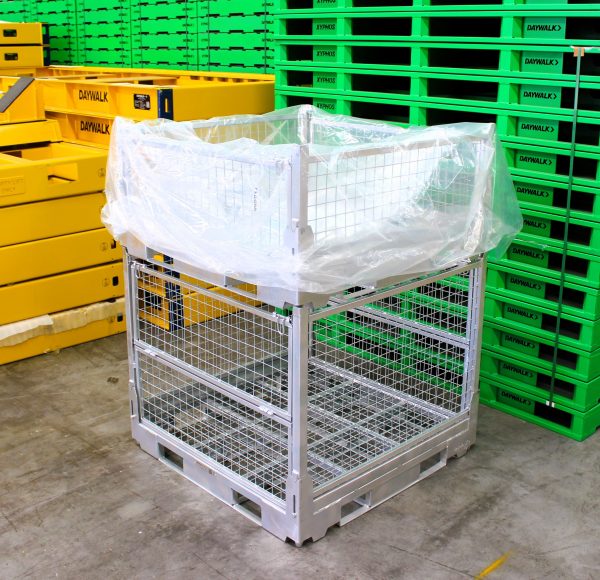Do you ever have to deal with Timber Pallets that have been crushed by a heavy load?
Instead of using a pine or hardwood pallet, where there can be concerns around timber pallets potentially having boards come loose, and thus causing the strapping or restraint system to lose its tension, there are now instances where engineer-rated steel pallets are required to cover all stakeholders in the Chain or Responsibility. This is especially the case where equipment needs to be sent off-site to be maintained or repaired. The Daywalk engineer rated steel pallets offer a more cost-effective option to sites so that instead of the need to engage an consultant to design and engineer a cradle or dolly for each individual piece of equipment, this range of rated pallets can be used to handle multiple shapes and sizes with correct lugs and heavy duty construction. There are 1T, 2T, 3T, 6T, 8T, 10T and 12T, dimensions range from half pallet size, through standard 1165×1165, to double width size, and even going as large as 3500mm x 2320mm.
As a result of more persons deemed as being part of Chain of Responsibility, much more attention is being given to the method that is being used to pack product.
Complying with transport law is a shared responsibility and all parties in the road transport supply chain are responsible for breach prevention. This is called CHAIN of RESPONSIBILITY (CoR).
We have also put together some definitions that may assist you in your operational understanding of transport & storage of heavy componentry.
- Working Load Limit (WLL) is the maximum working load designed by the manufacturer. This load represents a force that is much less than that required to make the lifting equipment fail or yield.
- The WLL is normally calculated using a factor of safety. The factor of safety is the degree of safety that is built into the structure and is what allows the working stress to be below the ultimate (breaking) stress;
- When looking at pallets – a WLL of 2T, for example, applies equally to either a timber pallet or a steel pallet i.e. either pallet will withstand a 2T load but this is dependant on both loading conditions and material conditions;
- Loading conditions describe how the pallet is loaded – overhung loads, weight distribution across the pallet, method of lift, strapping loads etc.
- Material conditions describe the physical condition of the pallet – age, deterioration through weather or impact damage etc.
- The WLLs for the Daywalk steel pallets have been certified by structural engineers and represent a true reflection of their load bearing capacity under various loading conditions.
Follow Daywalk to keep updated about CoR and Supply Chain Management






